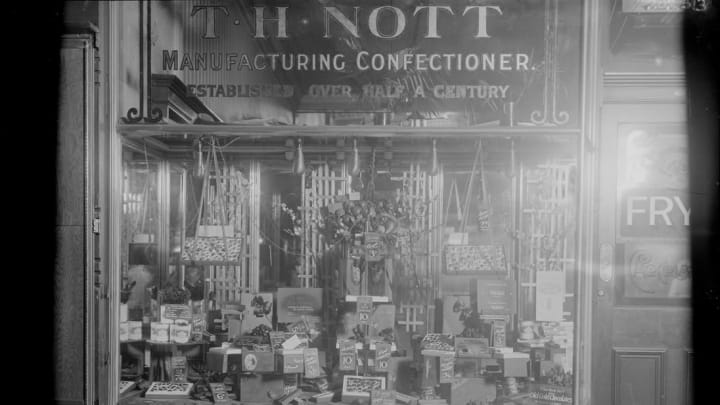At one ice cream and candy shop in Tallahassee, Florida, old-fashioned confections serve as a sweet little piece of history. Lofty Pursuits still uses a candy press made in 1871 to shape its acid drops and cinnamon hearts. And in this quirky video, spotted on Boing Boing, you can take a behind-the-scenes look at how the shop recreates the Victorian hard candies as they were made back in the late 1800s.
To make the cinnamon hearts, the sugary candy base made with cinnamon oil is mixed with food coloring and laid out on a candy cooling table made in 1891. As it cools, the substance develops a rubbery texture that the candymaker in the video describes as “a bag of molten sugar.” To make some of the candy white, he lays a portion of the yellow, hardening liquid over a hook, pulling the solidifying sugar down repeatedly and folding it over on itself to create air bubbles that will reflect the light and make the candy look white instead of yellow. Strips of the different colors of candy are then fed into the press, which flattens them into a thin layer and stamps them with hearts.
Once these strips of candy fully cool, the confectioner goes through the process that gives drop candy its name: He drops them onto a table from above to break apart the hearts. Then, all that’s left to do is eat them. (Or bag them and sell them, if you really must.)
The candymaker in the video also explores why Valentine’s hearts don’t look anatomically correct, which you can learn more about here (and in video form here).
[h/t Boing Boing]
